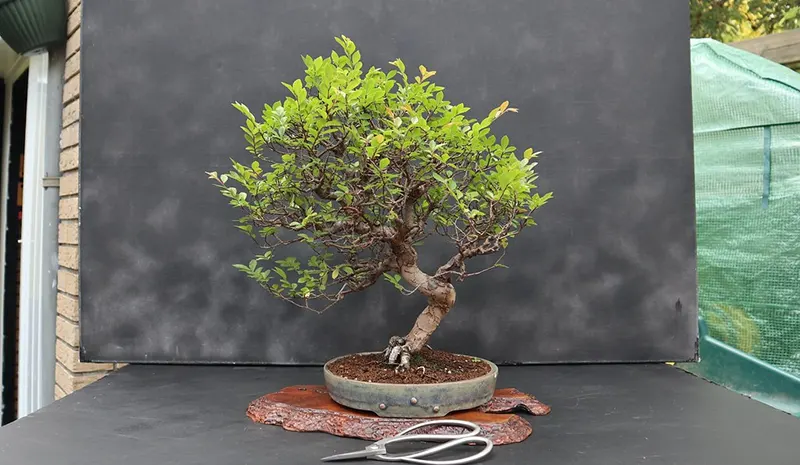Can You Eat Chinese Elm
In the wild, you find many animals and birds foraging in Chinese Elm Trees. Even domestic dogs love the bark and seeds of this beautiful tree. So the question might just come up if you can eat Chinese Elm or the Ulmus Parvifolia as it is known scientifically.
Image courtesy of Jerry Norbury | License details
Wild Food
In nature, there are many plants and trees that have been used as a food source or for their medicinal value. These wild foods have been harvested in areas where your more traditional vegetables and fruit are not farmed for ages. One of the least known food sources is the Chinese Elm. You would be quite surprised to find out how much of the Elm can be eaten. The most common part is the seeds, also called Samaras. The seeds can be harvested and eaten cooked or raw. Also used in cooking is the inner bark. The Cambium or Phloem has got high nutritional value.
You can also eat young sprouting seeds, normally raw or in a salad. Like any other harvest, wild food must be the right food, harvested at the right time, and prepared correctly to be really enjoyed.
Chinese Elm Seeds or Samaras
The seeds of the Elm are known as Samaras. The Elm tree seed starts as tiny flowers that cover the whole tree. Over spring, they mature into seeds. These green, leafy, coin-sized seeds or fruits will form on the trees through spring, just before the leaves appear. They may look like leaves from far away because they grow in such abundance. The seeds contain a high oil and succulent content. The seeds can be harvested and eaten raw or cooked. The seeds taste the best when still light green in color and not turning brown on the edges.
It can be enjoyed fresh from the tree or in a nice green salad. The seeds can be collected from the ground at a later stage when they are dry and brown in color. You must first separate the dry paperlike skin to expose the seeds if you do this. These dry seeds are then ground and used to thicken soups and stews. In cooking, Samaras can be used as a component. You can make a hearty leafy sauce curry using Elm seeds with garlic, kale and spring greens.
Another dish you can cook is a Chinese Elm seed and tomato lamb or wild hog stew. You can use the seeds with garlic, onions and tomatoes. The taste of the seeds is surprisingly great because of the oil content. It also has a pleasant texture and keeps bad breath at bay.
The Inner Bark
The Chinese Elm tree has flaky bark. When this bark is peeled away, it leaves the inner bark, also known as the Phloem or Cambium. This can be marbled orange, gray, brown or green in color. The cambium is sweet in taste as it transports all the sugars and nutrients from the leaves to the roots. It can be eaten raw, but it is more popular to dry it and mill it into a fine powder. The powder can be used to thicken soups or as a flavoring agent.
Chinese Elm Sprouts
The Chinese Elm’s way of propagating is wind-pollination. They rely on many pollen grains flying around to be successful in nature. This makes for big harvests of seeds. These seeds can be planted, and the sprouting seedlings can be used in salads and cooking, or just eaten raw.
Medicinal Value
The Chinese Elm has got great value as medicine. The leaves can be used as an Antidote and a Demulcent. The stem bark is used as a Demulcent, Diuretic, Expectorant, Febrifuge, Hypnotic and Lithontripic. The flowers can be used in the treatment of fever and Neuritis.
Is the Chinese Elm Poisonous?
As with many other more common foods, some people get allergic reactions from eating Chinese Elm. The normal reactions would include red itchy eyes, and skin irritations. Fortunately, this is something that does not happen frequently. Antihistamine can be used to counter the reaction. There were also a very small number of people that complained of toxic reactions. Super sensitive mouth, tongue and throat were the symptoms. This can be treated by drinking milk or water. None of the reactions has caused any hospitalization.
Can your Chinese Elm Bonsai Tree Poison Your Dog?
The short answer is yes. If you have a dog with a tendency for allergies, you best keep him away from your Elm Bonsai tree. Like squirrels and even tortoises, dogs love eating the flowers, seeds, and even bark of the Elm tree. Because of the flaky bark, they can get to the sweet-tasting Phloem by unknowingly destroying your Bonsai tree. Like us humans, some of them are more prone to be allergic to or poisoned by a Chinese Elm. Most dogs will be quite fine with eating Chinese Elm trees but keep them away from your Bonsai trees in general. Wagging tails and overzealousness has caused more damage than them getting poisoned.

Image courtesy of Shaun M Jooste | ©2022 Bonsai Alchemist
Conclusion
Yes, you can eat Chinese Elm. It tastes very good. You can eat it raw or use it in a variety of dishes. Salads, soups, stews, to name a few. The medicinal value is quite amazing. So next time you walk past a Chinese Elm, I am sure you will look at it from a different perspective.







